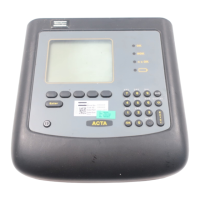ToolsTalk ACTA
161
14.4.2 X-bar charts
In an X-bar chart the mean of the measured variable is controlled, and not the
value of the variable itself. It is very important to distinguish between the
individual observations in one sample group and the mean of the observations.
Only the latter is of significance in an X-bar chart.
The centre line in an X-bar chart is the mean of the process outcome. In
practice, this is often estimated as the mean of the group means during a trial
period. It is denoted:
(the mean of the means). The control limits are supposed to be at a distance
of three standard deviations from the centre line. The standard deviation for the
mean of X is expressed as n/σ , where σ stands for the standard deviation of
X, and n is the number of observations in each sample group (at least five).
If the standard deviation of X is unknown it can be estimated during the trial
period, as described below.
Calculate the range in each sample group, i.e. the difference between the highest
and lowest values. The mean,
, of the various group ranges from the sample
groups (at least 20-25) is then calculated, and divided by the constant d
2.
This
constant depends on the group size and may be found in manuals of statistical
process control.
/d
2
is an estimate of the standard deviation of X. Thus, the
control limits in the X-bar diagram are:
Upper Control Limit, UCL =
)/(3
2
ndRX +
Lower Control Limit, LCL =
)/(3
2
ndRX −
In some cases
)/(3
2
nd
is replaced by a constant, A
2
, to simplify the
calculations:
UCL =
RAX
2
+
LCL =
RAX
2
−

